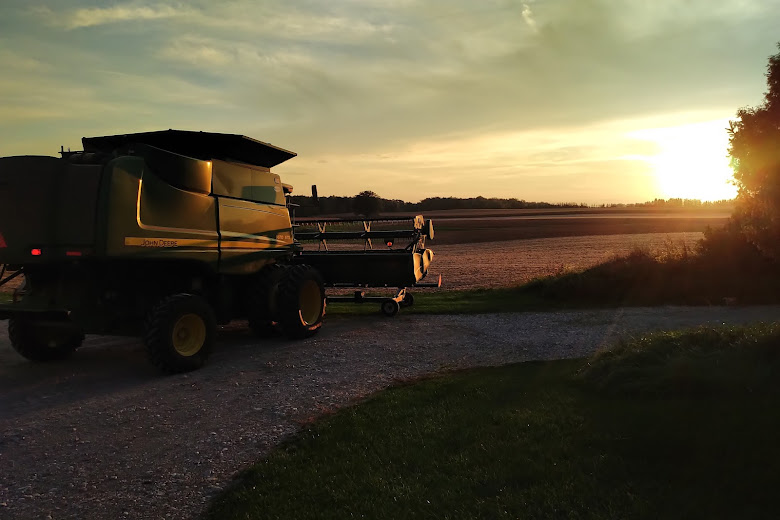AS PREVIOUSLY PUBLISHED IN THE RURAL VOICE:
At one time, oil and gas pipelines in Canada were installed with as little as two feet of depth of cover – maybe less. Although the minimum depth of cover required over new pipelines as set out in the applicable CSA Standard Z662 remains two feet, companies today routinely install pipelines with four feet depth of cover or more. However, a major deficiency in the depth of cover standard has been the absence of a requirement to maintain depth of cover over pipelines to any specified minimum. A pipeline may be sufficiently deep at installation to ensure the safety of those using the land above the line, but what if depth of cover erodes over time?
Thousands of kilometres of oil and gas pipelines run beneath agricultural land across Canada with ever larger and larger farm equipment tilling, planting, spraying, fertilizing and harvesting above. Pipelines lying four feet or more beneath the surface may be unlikely to pose a risk of danger to agricultural operations above, but what of pipelines only two feet beneath the surface? What if the ground above a pipeline installed long ago with two feet depth of cover has eroded by water or wind or been displaced by decades of tillage?
In Ontario, the CSA standard for depth of cover has been modified by regulation to include the following requirements:
10.6.5.5
Operating companies shall develop written procedures for periodically determining the depth of cover for pipelines operated over 30% of SMYS of the pipe at MOP. Such written procedures shall include a rationale for the frequency selected for such depth determinations. Where the depth of cover is found to be less than 60 cm in lands being used for agriculture, an engineering assessment shall be done in accordance with clause 3.3 and a suitable mitigation plan shall be developed and implemented to ensure the pipeline is adequately protected from hazards.
Where a pipeline company determines that the current depth of cover over a pipeline is less than 60 cm (2 feet), the company must perform an engineering assessment and develop a “suitable” mitigation plan to ensure the pipeline is adequately protected. The company is required to have written procedures for “periodically” determining the depth of cover over its pipelines. What passes for “suitable” in a mitigation plan or “periodically” in monitoring depth of cover over pipelines is not prescribed by the CSA standard or the Ontario regulation.
Are the current requirements for monitoring depth of cover and addressing instances of insufficient depth of cover enough to protect those carrying out agricultural operations and other activities above pipelines? A recent incident suggests pipeline landowners may have cause for concern.
The Transportation Safety Board of Canada (“TSB”) has released a report of its investigation of an October, 2021 natural gas pipeline rupture in Manitoba caused when a farmer struck the line with a ground-scraping blade. The strike happened in an agricultural field in a rural area in southwestern Manitoba near the Saskatchewan border. To the east of the pipeline that runs through the field, there is a drainage channel running almost perpendicularly to the pipeline. The channel crosses over the line and drains into a small marsh area. At the time of the strike, the farmer was pulling an 18-foot-wide landleveller/scraper with a large articulated four-wheel-drive tractor to scrape weeds and silt from the bottom of the drainage ditch. The blade was in a “flat position”, which has a maximum blade depth of just 26 cm (less than 2 feet) according to the manufacturer of the implement. The farmer had carried out the same scraping process periodically for several decades prior to the pipeline strike. It was determined that, at the time of the strike, the ground-scraping blade was penetrating the ground less than 12 cm (less than 5 inches).
The regulation in place at the time the pipeline was installed in 1960 required that it be buried to a depth of at least 61 cm. Obviously, the depth over the line had diminished considerably since the time of construction at least in the location of the strike. The company responsible for the pipeline conducts annual right-of-way inspections, but had not noted any unsafe conditions at the occurrence location. The last depth of cover survey conducted by the company was in 2009, with the closest identified issue being about 700 metres upstream of the occurrence location. The 2009 survey involved taking depth measurements at 25 m spacing generally, at 3 m spacing across sloughs, depressions or abrupt changes in elevation, and at all key features such as the bottom of ditches, drains and streams. The measurement taken closest to the site of the 2021 pipeline strike was 4.5 metres downstream of the site. As depth of cover at that location was 88 cm (approximately 2.9 feet), a more detailed assessment of the area was not triggered.
The TSB concluded that the October, 2021 pipeline strike and rupture was caused in part because the pipeline company did not identify that the depth of cover over its pipeline had been gradually reduced through the removal of weeds and silt from the drainage ditch over time. The TSB warned that: “If a pipeline company’s damage prevention program does not consider variations in a pipeline’s depth of cover over time, depth of cover reductions may go unmitigated, increasing the risk of pipe damage due to agricultural activities.”
Read the TSB Report at: P21H0143.

